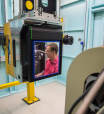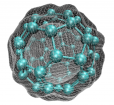
Showing 501 - 520 of 877 results
Greater Sydney Commission and ANSTO reveal innovation plans for Sydney’s South

High Performance Macromolecular Crystallography Beamline (MX3)
The High Performance Macromolecular Crystallography beamline will enable the study of very small (sub-5 micrometre) or weakly diffracting crystals, providing a state-of-the-art high-throughput facility for researchers. MX3 will be able to study the structures of large proteins and protein complexes for virology, drug design and industrial applications via goniometer mounted crystals, in-tray screening, or via serial crystallography methods.

Anonymised Review
ANSTO has agreed to participate in an Australian trial of a review of research infrastructure access proposals in which applicants remain anonymous to aid the removal of structural barriers to the career progression of Women in STEM.

X-ray absorption spectroscopy
X-ray absorption spectroscopy (XAS) is a versatile tool for chemistry, biology, and materials science. By probing how x rays are absorbed from core electrons of atoms in a sample, the technique can reveal the local structure around selected atoms.
Bipartisan support for national radioactive waste management facility
The past, present and future in climate system science

Role at ANSTO
Radiation Monitoring
ANSTO continually monitors environmental gamma radiation from a station located in Engadine NSW. ANSTO uses environmental radiation data to evaluate atmospheric dispersion from its site. This radiation is almost completely natural background radiation.

Opportunities
Interested in a scholarship or graduate position at ANSTO? Review the opportunities at a glance.
Research provides understanding of migration of early peoples into Oceania
Research has revealed the Lapita cultural group interacted with the indigenous people of Papua New Guinea more than 3,000 years ago and set the stage for the peopling of the Pacific
ANSTO scientists share thoughts on Oppenheimer film

Speeding up your path to activity and selectivity
How expensive and time consuming are your tests for optimising your catalyst?

VASP and Quantum ESPRESSO

Air pollution from combustion processes in Newcastle
Combustion reactions in vehicles, household woodfires and coal-fired power plants all result in fine particle air pollution in the air we breathe. ANSTO has been measuring and characterising fine particle pollution from key sites around Australia for more than 30 years.
This data set provides records from 1998 to 2019 of the concentration of 12 elements present in fine airborne particulate matter from an air sampling station located in Mayfield in Newcastle, NSW.

Q2XAFS 2023 | Statements

Privacy Policy
Australian Nuclear Science and Technology Organisation (ANSTO) is committed to protecting your personal information in accordance with the Privacy Act 1988 (Cth) (Privacy Act) and the Australian Privacy Principles.
Innovation Precinct featured in Australian Government statement of principles
ANSTO’s Innovation Precinct has been identified as an “emerging precinct” in the Federal Government’s Statement of Principles for Australian Innovation Precincts.

Technical Information - Bilby
Specifications
